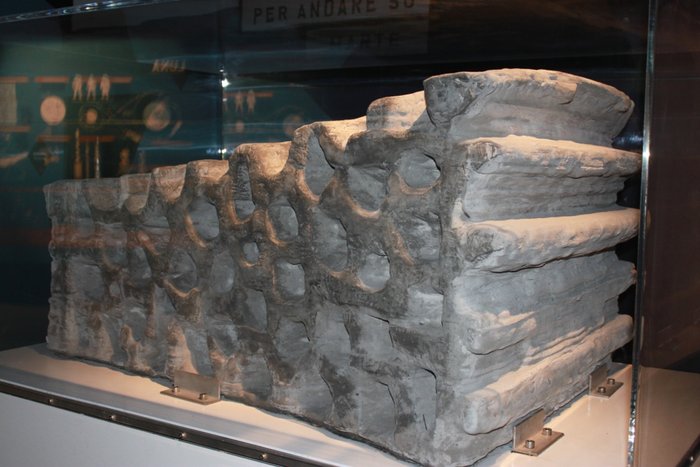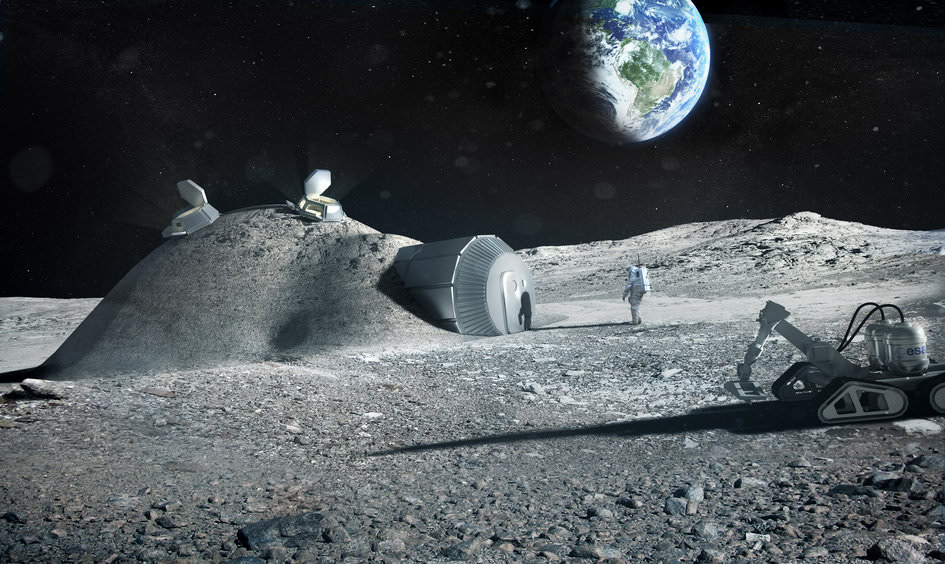In the next few decades, NASA, the European Space Agency (ESA), China, and Russia all plan to create outposts on the lunar surface that will allow for a permanent human presence. These proposals seek to leverage advances in additive manufacturing (aka. 3-D printing) with In-Situ Resource Utilization (ISRU) to address the particular challenges of living and working on the Moon.
For the sake of their International Moon Village, the ESA has been experimenting with “lunacrete” – lunar regolith combined with a bonding agent to create a building material. But recently, a team of researchers conducted a study (in cooperation with the ESA) that found that lunacrete works even better if you add a special ingredient that the astronauts make all by themselves – urine!
More specifically, the chemical urea, an organic compound found in the urine of animals. The team responsible for this find was led by Shima Pilehvar of Østfold University College and included members from Norway, Spain, the Netherlands, and Italy. Their research, which recently appeared in the Journal of Cleaner Production, was supported by the ESA’s European Space Research and Technology Centre (ESTEC).

As they describe in their study, the team conducted several experiments to determine the potential of urea to act as a plasticizer. When incorporated into concrete, they wanted to see if it would soften the initial mixture and make it more pliable prior to hardening. Testing this involved the use of simulated lunar regolith developed by ESA with urea and various plasticizers and then 3-D printing the resulting product.
Ramón Pamies, a professor with the Polytechnic University of Cartagena (UPCT) and a co-author on the study, described how lunacrete will be made by astronauts in a recent Sinc press release:
“To make the geopolymer concrete that will be used on the moon, the idea is to use what is there: regolith (loose material from the moon’s surface) and the water from the ice present in some areas. But moreover, with this study we have seen that a waste product, such as the urine of the personnel who occupy the moon bases, could also be used. The two main components of this body fluid are water and urea, a molecule that allows the hydrogen bonds to be broken and, therefore, reduces the viscosities of many aqueous mixtures.”
The experiments were carried out at Østfold University College in Norway, where the samples were fashioned and tested. They were also subjected to analysis at UPCT using a technique known as X-ray diffraction. What the experiments showed was that samples made with urea were able to tolerate hight weight loads while remaining almost entirely in the same shape.

To see how they would endure extreme temperature variations, like those present on the Moon, the samples were also heated to 80 °C (176 °F) and then frozen, over and over. After eight freeze-thaw cycles, their resistance was tested again and found to be even stronger. In short, these tests showed that another in-situ practice (using the latrine) could aid in the construction of lunar bases that can handle the elements.
While these results are encouraging (if a bit ), the team stresses that further testing needs to be done and an extraction process is yet to be designed. As Anna-Lena Kjøniksen, a researcher from Østfold University College who supervised the study, indicated:
“We have not yet investigated how the urea would be extracted from the urine, as we are assessing whether this would really be necessary, because perhaps its other components could also be used to form the geopolymer concrete. The actual water in the urine could be used for the mixture, together with that which can be obtained on the Moon, or a combination of both.”
The team also stressed the need for further testing to see which building material would be optimal for the creation of lunar bases. In addition to resilience and tolerance of extreme heat and cold, it will also need to be something that can be mass-produced by 3-D printers. Alas, these are just one of the challenges of building a lunar base.
But as this study shows, such challenges provide the opportunity to get creative. As get closer and closer to the point where key lunar missions are scheduled – like Project Artemis, just for starters – we can expect that more creative solutions will be proposed.
Further Reading: Sinc, Journal of Cleaner Production

